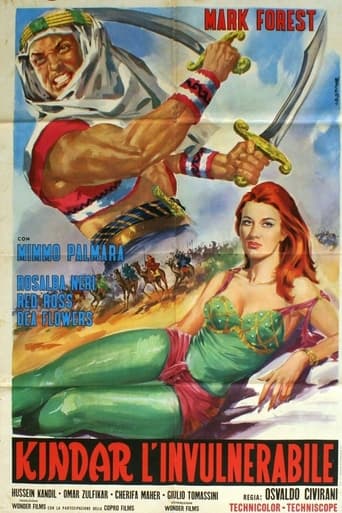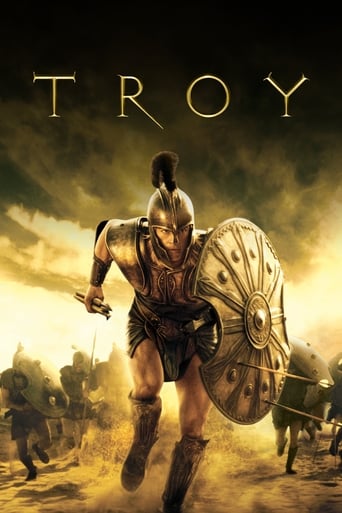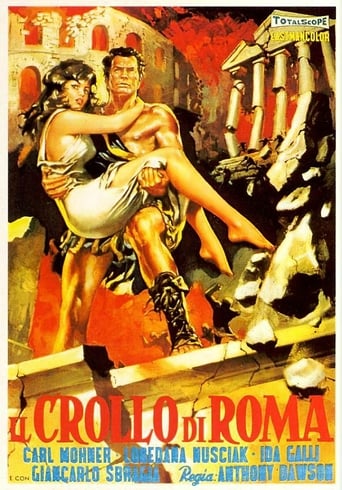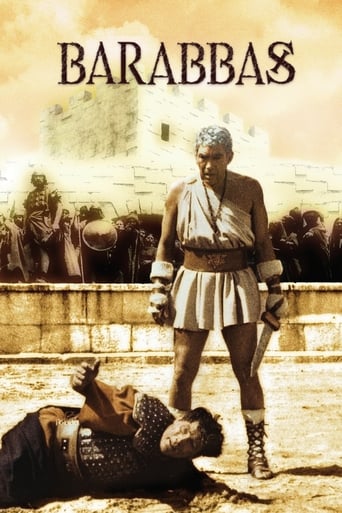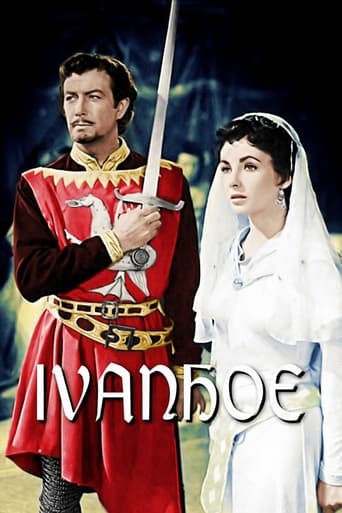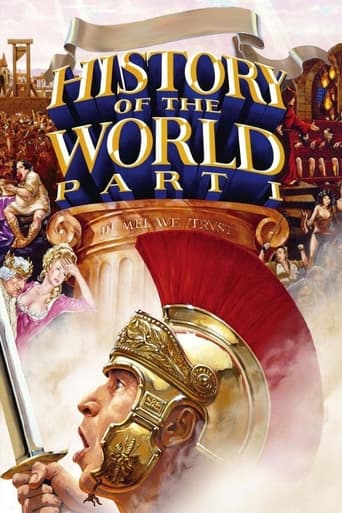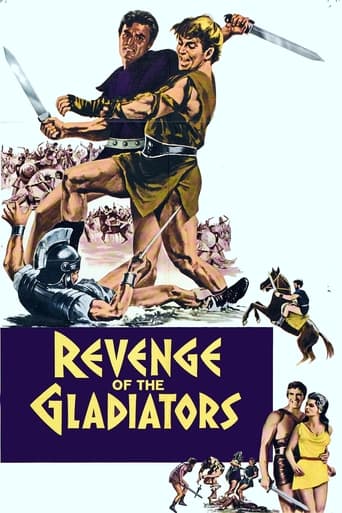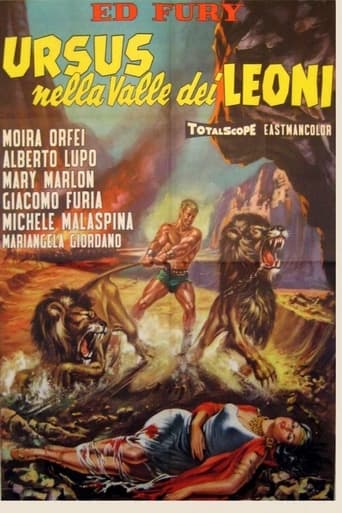
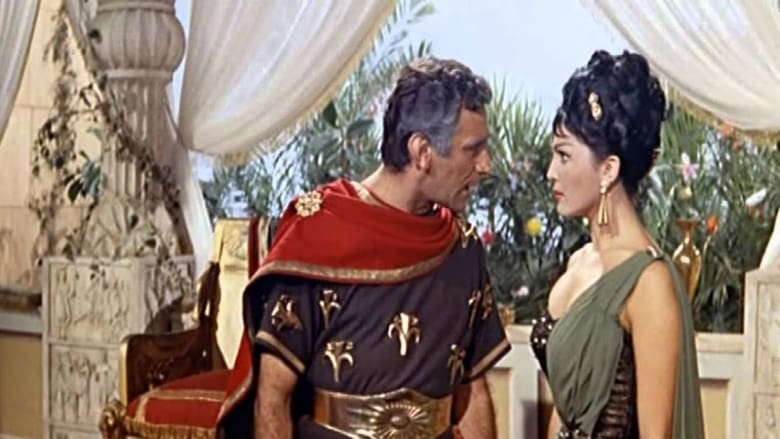
Ursus in the Valley of the Lions (1961)
Bodybuilder Ed Fury stars as the legendary Ursus in this above-average sword-and-sandal adventure from veteran director Carlo Campogalliani. The plot concerns Ursus' attempts to rescue his kidnapped fiancee, aided by a pretty blind slave girl. Now an evil queen, Ursus' former love throws him into a gladiatorial arena with a bull, which manages to smack the slave girl in the head and restore her eyesight before Ursus defeats it and his enemies. The bullfight is particularly well-staged, and this exciting spectacle may be the highlight of Fury's erratic screen career. ~ Robert Firsching, Rovi
Watch Trailer
Cast


Similar titles
Reviews
Wonderful character development!
everything you have heard about this movie is true.
Best movie ever!
A Masterpiece!
First thing to mention is this one is in black and white. It's not the colorful peplum that we are used to from the 1960s. B&W films are great, some of my all time favorite films are in B&W.Secondly, the film feels like is was a television episode of something. The way it is filmed and acted out looks like a Studio One production.The story of Ursus is similar to Tarzan. Tarzan was raised by apes while Ursus was raised by lions. How their stories plays out is a bit different but there are a few parallels. Let's not forget the story of the boy who was raised by wolves. - You get the idea.Overall, I am unimpressed by the entire film... and displeased with the circus animals in the film being used the way there were.1/10
The second film in Ed Fury's "Ursus" trilogy, (though there's little in the way of story-line to connect the three movies), begins with an obligatory setting-the-scene prologue which establishes the infant Ursus as the true heir of a kingdom overrun and conquered by a villainous barbarian. Though faithful subjects manage to smuggle the infant Ursus out of the besieged city in a basket, the basket tumbles into the lair of a pride of lions and the lost heir soon becomes nothing more than the subject of wistful rumor and legend. Mercifully the movie quickly jumps forward to the adult Ursus, now grown into a strapping though naive young man who learned his language skills from men in passing caravans. Up to this point the second "Ursus" movie has shown little promise, primarily because the lions which raised our hero look and act like lethargic, second-rate sideshow attractions rather than wildly magnificent Kings of the Beasts. Then we have a routine sequence in which Ursus acquires a slave girl from a passing trader. However, once the evil usurper learns that the rightful occupant of his throne is alive in the land, various elements of the movie finally come together to create a lively and entertaining entry in the sword-and-sandal cycle. One element worth noting here are the two "beefcake-bondage" sequences which are among the best such sequences to be found in the whole gamut of this genre. In the first, a peplum-wearing Ursus -- played, of course, by Ed Fury -- stands as a captive in the usurper's court. A length of wood, (perhaps too thin for this purpose), has been bound to the backs of his outstretched arms. Chains around his wrists and ankles are held by nervous-looking soldiers. Other soldiers guard him with spears pointed menacingly toward him. The usurper taunts him but Ursus remains defiant. Later, having been taken to a torch-lit dungeon, the sweaty Ursus stands with outstretched arms chained to the stone walls. That wooden pole has been removed from his shoulders but a metal ring now encircles his neck and a chain attached to this ring leads up to the ceiling. Two long pieces of wood are fitted around his ankles, preventing him from kicking or changing position. Fury, about 32 or 33 years old at this time, is only ever-so-slightly past his prime -- his waist looks a bit thick -- but he's still a compelling hunk of manhood and his bondage poses are of iconic quality. What's more, his nipples are dark and sharply-defined against his skin. Unfortunately, there's no actual torture here, unlike the other two Ursus movies in which a series of whiplashes play a symphony of pain on Ed Fury's bare back as he's forced to turn grindstones. (As other reviewers have pointed out, the print under discussion here has lamentably faded into muddy-looking sepia tones.)
Though featuring many an unlikely plot point (starting off with Ursus as a baby – even if it was the third of his adventures to be released within the same year!), this emerges as a slightly above-average peplum in which the muscular hero is once again played by the affable Ed Fury. He is the heir to some throne, obviously coveted by the villain of the piece – Alberto Lupo – and thus the target of assassination; amazingly, he not only survives this but is also brought up, Tarzan-like, by a bunch of lions (hence the title). Amusingly, though he seems to have effortlessly mastered the faculty of speech regardless, Ursus is blissfully ignorant of etiquette since he sees nothing wrong in taking a dip into a stream while the protesting (and obviously annoyed) heroine – a girl, intended for a slave market, whom he helps – is bathing! Special mention, then, is given in the credits to the animal wrangler involved, Orlando Orfei, presumably a relative of the film's villainess Moira Orfei (who was actually a staple of such fare: as was the case with the first URSUS, she has to contend with another girl over the love of a man, even if the object of her affection here is Lupo). Surprisingly, the film maintains a fairly sober tone throughout – with little concessions to the genre's usual pitfalls (there is no insufferable comic relief, for instance) but we still get the villain's unconvincing demise at the hands of Simba, Ursus' favorite lioness (elsewhere it also bonds with the heroine's snowy-white mutt), and some unintentionally hilarious action scenes: Gerard Herter, Lupo's henchman, is hit squarely on the head with a stone-block the hero has dislodged from his prison-cell and lives (at least long enough to be devoured by a creepy pack of hungry hyenas); a soldier is thrown into a fire during a scuffle, rises up blazing, trips and falls flat on his face; a number of soldiers are commissioned to demolish a cave, the meeting-place of rebels, only to end up buried within it themselves, etc. In the end, the film provides standard excitements but proves mildly entertaining nevertheless (if hardly essential); again like URSUS, we find some notable names among the credits – not just director Bragaglia but composer Riz Ortolani and assistant director Ruggero Deodato(!).
"Ursus nella valle dei leoni" (1961) cannot compete with some of the better known muscle man movies starring Steve Reeves, Mark Forest, Gordon Scott, Alan Steel, and Reg Park. Nevertheless, this tyrant-versus-a-strongman saga with Ed Fury in the title role ranks a notch above the usual run-of-the-mill peplum potboilers. At best an uneven but entertaining epic, this first part of this adventure opus opens with an expository prelude with a kingdom being overrun by barbarians, then relies on comedy in its first half before it reverts during its second half to the standard he-man heroics about the lost son of a ruler who topples the murderous miscreant (Albert Lupo of "Herod the Great") who ran Ursus' unarmed father through with a sword, ascended the throne, and then enslaved the population. Invaders attack the kingdom but baby Ursus survives the sword after his mother packs him off to safety in a basket on horseback. Soldiers attack the queen and her minions and she skewers herself with a sword before they can take her. The safety proves to be short-lived for Ursus, and the basket containing future warrior falls off the horse during flight. Ursus winds up alone in the wilderness surrounded by a den of lions that nurse him. Sound far-fetched? Of course, it is! However, "Ursus in the Valley of the Lions" is no more outlandish than the actual legend about the brothers Romulus (Steve Reeves) and Remus (Gordon Scott) who founded Rome in director Sergio Corbucci's classic "Duel of the Titans" (1961), where wolves supposedly nursed the brothers to maturity. Wisely, seasoned Italian director Carlo Ludovico Bragaglia, who also helmed a lesser Hercules movie "The Loves of Hercules" (1960) and the Victor Mature ancient military yarn "Hannibal," dwells only momentarily on Ursus' unusual childhood. Imagine a lioness changing diapers, much less nursing a squalling infant, and you can understand why Bragaglia leaps forward to Ursus as an adult. In a sense, Ursus has more in common with Tarzan of the Apes than Hercules, Samson, or Ulysses. Whatever the case, Ursus' idyllic life among the big cats changes for the worst when a wagon transporting a load of female slaves blunders into one of the strongman's animal traps and loses a wheel. The strongman has to push their vehicle single-handedly out of the pit. Ursus takes a shine to one of the maidens and she stays behind while the rest head off to the kingdom. The tyrant who sits on the throne learns about Ursus from a medallion that one of the slave girls has and realizes the threat that he poses to him if the public should learn about him. The ruler dispatches his bow & arrow toting soldiers to the lions' den, and they poison all the lions with tainted meat and capture Ursus with a net. Indeed, the villain here is a dastard! Mind you, Ursus knows nothing of all this intrigue and would have preferred to have lived out his life in blissful ignorance until the evil king intruded into his affairs. The action shifts gears from comedy to adventure after the villains put Ursus into chains and imprison in a dark cell. The ruler doesn't want anybody to get wind of who Ursus really is and even offers to free him if the strongman will keep silent about his heritage. Eventually, Ursus manages to escape with the help of a palace insider and finds his way out of a den of hyenas. In the execrable, full-frame, Sinister Cinema black & white print that I own of this movie, you cannot tell the difference between Ed Fury and the animal trainer and that is a plus. Ed Fury or the animal wrangler--when either shares scenes with the beasts--doesn't battle with a stuffed lion's head like Mark Forest did in "Son of Samson." The hyena scenes in the prison are pretty creepy, too. Ed Fury's Ursus doesn't go around hurling giant rocks, battling mythical entities, or collapsing architecture, but he is splendidly dubbed with a loud voice that never leaves you in doubt about what he says. The villains are worthy enough to make Ursus' struggle a challenge. Incidentally, this was Ed Fury's second film as a muscle bound hero after "Colossus and the Amazon Queen" (1960). Ruggero Deodato, who later helmed such exploitation classics such as "Jungle Holocaust" and "Cannibal Holocaust," handled second unit directing duties on this movie, too.





